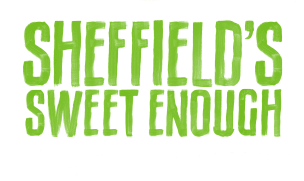Whatever your age, 50 grams of sugar per day is too much. Eating more than the recommended amount of sugar can lead to weight gain, tooth decay and other health problems. Public Health England states anyone over the age of 11, including all adults, should have no more than 7 teaspoons or 30 grams of sugar per day and children should have a lot less.
Your daily recommended limit of sugar as described by Public Health England refers to ree sugars These are the added sugars found in food and drink, such as biscuits, chocolate, cereals and sugary fizzy drinks, as well as natural sugars found in honey, syrup, fruit juice and smoothies. Natural sugars found in milk, and in whole fruit and vegetables don count towards this limit.
Public Health England has set out the maximum recommended daily intake by age group. Children aged 0 to 3 years should have no free sugar. 4 to 6 years olds should have no more than 4.5 teaspoons or 19 grams of free sugar per day. Older children aged 7 to 11 should have no more than 5.5 teaspoons or 24 grams of free sugar per day. Anyone over the age of 11 should have no more than 7 teaspoons or 30 grams of free sugar per day.
Some foods are obviously high in sugar, like biscuits and sweets, but many also contain hidden sugars, such as yoghurts and snack bars. Always read the label and try to stick to the recommended maximum intake of sugar per day, which is less than 7 teaspoons or 30 grams of free sugar for adults and much less for children. Remember, naturally occurring sugars found in milk, fruit and vegetables don't count towards your daily limit.
Hidden sugars can be found in lots of different foods and drinks that we might not expect to be in high in sugar or that are marketed to us as being "healthy". Examples include ready meals, low-fat yoghurts, fruit smoothies, snack bars, salad dressing, ketchup and white bread.
There are many foods and drinks you wouldn't expect to contain sugar, such as low-fat yoghurts, pizza, ready meals and ketchup. Always check food labels to see how much sugar an item contains.
Hidden sugars are added sugars that are disguised under a different name, such as glucose or fructose, or appear in products where you wouldn't expect to find them, such as pasta sauces and ready meals.
Most products list sugars as 'Carbohydrates (of which sugars)' in the nutrition information. There are other names for sugar that often appear, such as glucose and fructose. In general, try to avoid products if sugar is listed as one of the top three ingredients, if the ingredients end in 'ose', if it contains more than one type of sugar or it is red for sugar on the traffic light label.
There are lots of other names for sugar including glucose, sucrose, dextrose, maltose, corn syrup, maple syrup, agave syrup, honey, hydrolysed starch, invert sugar and molasses.
Sugar must always be declared on a food label. However, be aware that it isn't always called sugar. Look out for words that end in 'ose' or syrups as these are sugars under a different name.
Always read the label to check how many carbohydrates (of which sugars) are in products. The amount of sugar will be listed in grams. It's useful to know that 4 grams = 1 teaspoon of sugar or 1 sugar cube. Adults should have no more than 7.5 teaspoons/sugar cubes per day (30g).
The traffic light panel on the front of many products tells you whether a product is high (red), medium (amber) or low sugar (green). This is usually based on a serving size rather than the full packet. Try to eat foods that are high in sugar less often and in small amounts.
Eating some sugar as part of a healthy, balanced diet is absolutely fine. However, eating too much sugar is linked with obesity, tooth decay, type 2 diabetes, high blood pressure, low self esteem and depression. Poor eating habits can also have a negative effect on sleep and concentration. In pregnancy, too much sugar can lead to excessive weight gain that can put your baby at risk of complications including blood clots, gestational diabetes and preeclampsia.
